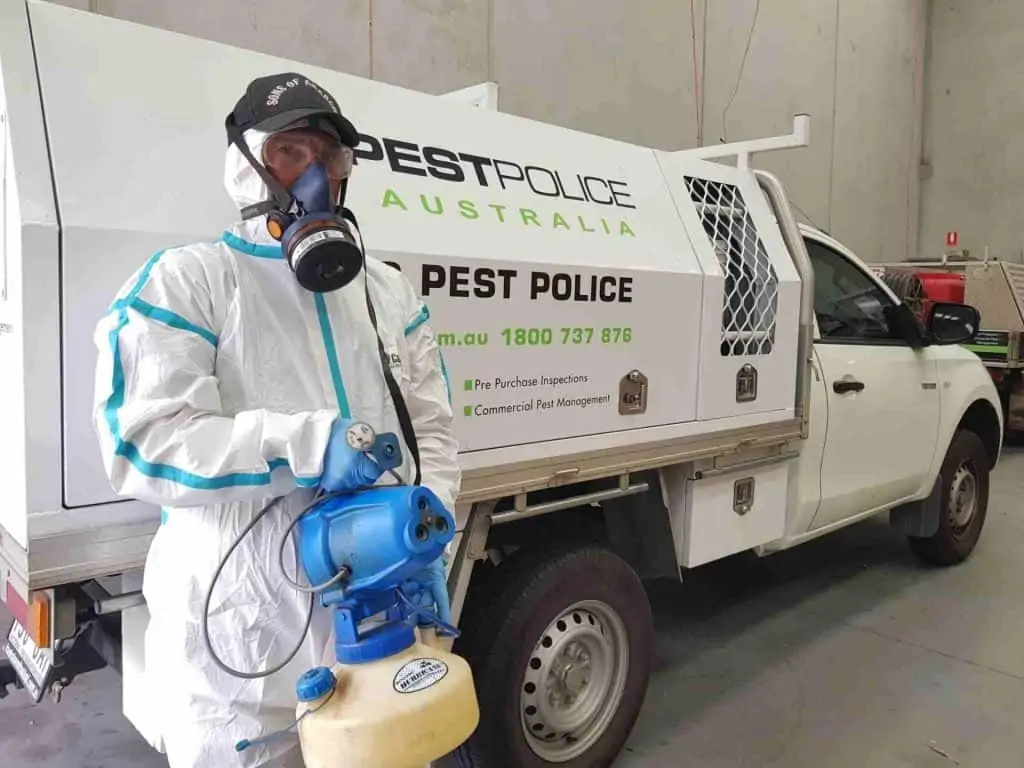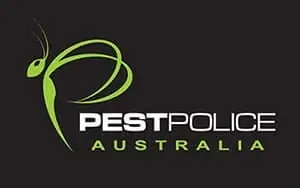Over 40,000 properties inspected
Environmentally friendly treatments
12-month warranty
We use the latest technology and tools for pest inspection and treatment

Treatment 1 — X-ray: AQIS’s current Hymen X-ray unit, mounted in a mobile van, was used to X-ray the samples
Treatment 2 — Termatrac®: Termatrac® equipment supplied by Pest Police Australia to test all the randomly numbered samples was used
Treatment 3 — Thermal imaging camera: A thermal imaging camera supplied by Pest Police Australia was used to test the samples
Treatment 4 — Visual inspection: Two AQIS officers performed routine visual inspections (noting suspected to be infested vs free of insects) for each of the samples
Treatment 5 — Tramex moisture meter: A Tramex moisture meter supplied by Pest Police Australia was used to test the samples
Treatment 6 — Acoustic Device: An AED2000L Acoustic Emission Detector was used to test the samples
Termatrac is a breakthrough development in the detection of termites. Invented and developed in Australia using technology similar to radar, Termatrac is the exciting answer to detecting termites through timber, plasterboard, brick or masonry with no interference to the building material or termite activity.
With no drilling, tapping or prodding, Termatrac is detects termites without termite defection. With Termatrac, the pest professional enjoys the advantage of accurate detection and customer peace of mind.
Track the extent of their activity without disturbances
Track termites to an entry point
Termatrac, explained simply, emits signals which penetrate the material that is being searched. If these signals are interrupted by termite activity, the liquid crystal display will alert you to this activity. Termatrac relays this information to the operator so that they can pinpoint the termites in an instant. Then you can:
Determine the most suitable termite treatment procedures
Locate nests via entry point
In the past few years, thermal imaging or infrared technology is an effective tool to detect termite activity.
As with all technologies, there’s a lot of myths floating around, so here’s a couple of short lists on what thermal imaging can and cannot do.
Reduce time in trying to locate an area of significant termite activity when there’s a known infestation
Allow the user to pinpoint areas of suspicion
Help carry out non-destructive inspections
Provide both the user and their client more reassurance that the job has been done properly
Supply evidence of infestation, or lack of, should the quality of a technician’s job come into question
See through walls
Pinpoint individual termites
Tell the user if an area of suspicion is actually caused by termites or something else
Be used as an “all-in-one” inspection tool
Replace the skills of a technician trained in the locating and management of Termites
Everything has a different heat pattern due to various environmental factors (sunlight, ambient temperature, humidity, etc.) and what the object is made of (density, moisture content, etc.). Because the nature of all things is to reach an equilibrium (where temperatures are all the same), heat is moved from one object to another to try and get to this equilibrium.
Termites enjoy temperatures from 28 – 36ºC, and make their nests at around this temperature. As ambient temperatures are usually much lower than this, the imprint this has on walls and other building materials can be seen. Having a Thermal Imaging Camera is like having tens of thousands of highly tuned, non-contact thermometers, producing an-easy-to-understand and -interpret picture.
Nearly all pests, termites and other common wood-destroying organisms need moisture and high humidity to survive and multiply, thus they will seek the locations of high moisture and humidity to inhabit. Such areas can contribute to infestation by termites, carpenter ants and other fungal growth. The location of areas of excess moisture is one of the most important elements in the location, control and eradication of wood destroying organisms.
At Pest Police Australia, we only use the best equipment available, including the Tramex Moisture Encounter Plus MEP. The Moisture Encounter PLUS MEP is an upgraded version of the world’s most popular and successful non-destructive moisture meter the Moisture Encounter. With no probes or pins to cause surface damage, the MEP uses external rubber electrodes in direct contact with the surface for best sensitivity and signal penetration.
External rubber electrodes make direct contact with the material for best sensitivity, repeatability and greater depth of signal penetration. Wide range of readings of five percent to 30 percent on the wood scale and 0 to 100 on the comparative scale for other materials.
With non-destructive measurement, there is no surface damage to the material being tested. Three measurement ranges are optimised for testing different materials. It has deep signal penetration up to 1¼ inches (30mm) to detect elevated moisture through most covering materials without having to damage the material being tested.
It is also has a large, clear and easy-to-read metre. Hold function allows the user to “freeze” the reading taken in awkward locations. There is an audio warning tone for high-moisture readings. It can be switched on or off. The auto power-down switches the meter off when not in use, letting it preserve battery power.
Wood samples from the trial were also used for a second cold-treatment trial in Melbourne to measure the efficacy of cold treatment for killing pests in timber. There has been a world-wide push for alternatives to methyl bromide and other traditional treatments of infested wooden products owing to harmful environmental impacts.
The infested wood samples were kept in a freezer at the Melbourne office for varying lengths of time (1 to 14 days). Treated samples were removed from the freezer, defrosted, and then destructively sampled. All insects recovered were counted, measured, identified and their condition noted (alive or dead). At least 100 insects were recovered, all of which were dead, which indicates that the treatment was successful.
The outcome of the trials will be reported on soon and may be used to provide AQIS with additional options for treating a range of timber products effectively, maintaining quarantine integrity while being friendly to the environment.

